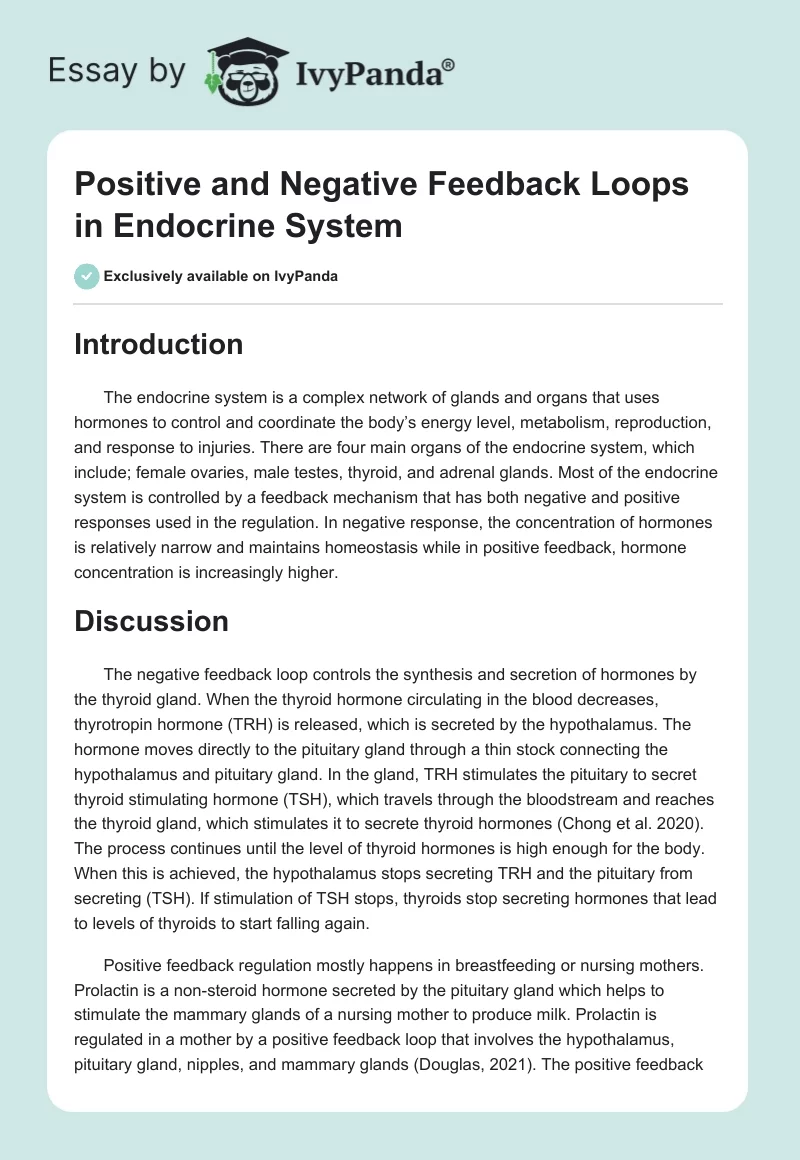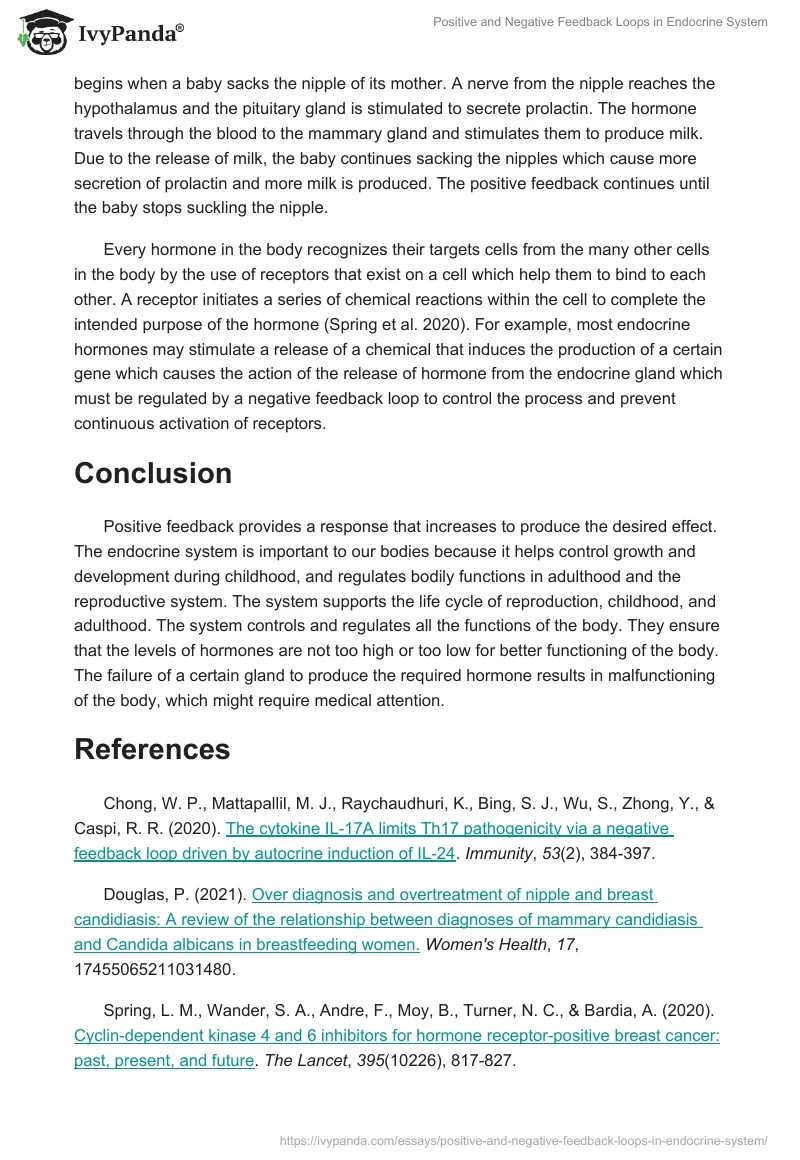Introduction
The endocrine system is a complex network of glands and organs that uses hormones to control and coordinate the body’s energy level, metabolism, reproduction, and response to injuries. There are four main organs of the endocrine system, which include; female ovaries, male testes, thyroid, and adrenal glands. Most of the endocrine system is controlled by a feedback mechanism that has both negative and positive responses used in the regulation. In negative response, the concentration of hormones is relatively narrow and maintains homeostasis while in positive feedback, hormone concentration is increasingly higher.
Discussion
The negative feedback loop controls the synthesis and secretion of hormones by the thyroid gland. When the thyroid hormone circulating in the blood decreases, thyrotropin hormone (TRH) is released, which is secreted by the hypothalamus. The hormone moves directly to the pituitary gland through a thin stock connecting the hypothalamus and pituitary gland. In the gland, TRH stimulates the pituitary to secret thyroid stimulating hormone (TSH), which travels through the bloodstream and reaches the thyroid gland, which stimulates it to secrete thyroid hormones (Chong et al. 2020). The process continues until the level of thyroid hormones is high enough for the body. When this is achieved, the hypothalamus stops secreting TRH and the pituitary from secreting (TSH). If stimulation of TSH stops, thyroids stop secreting hormones that lead to levels of thyroids to start falling again.
Positive feedback regulation mostly happens in breastfeeding or nursing mothers. Prolactin is a non-steroid hormone secreted by the pituitary gland which helps to stimulate the mammary glands of a nursing mother to produce milk. Prolactin is regulated in a mother by a positive feedback loop that involves the hypothalamus, pituitary gland, nipples, and mammary glands (Douglas, 2021). The positive feedback begins when a baby sacks the nipple of its mother. A nerve from the nipple reaches the hypothalamus and the pituitary gland is stimulated to secrete prolactin. The hormone travels through the blood to the mammary gland and stimulates them to produce milk. Due to the release of milk, the baby continues sacking the nipples which cause more secretion of prolactin and more milk is produced. The positive feedback continues until the baby stops suckling the nipple.
Every hormone in the body recognizes their targets cells from the many other cells in the body by the use of receptors that exist on a cell which help them to bind to each other. A receptor initiates a series of chemical reactions within the cell to complete the intended purpose of the hormone (Spring et al. 2020). For example, most endocrine hormones may stimulate a release of a chemical that induces the production of a certain gene which causes the action of the release of hormone from the endocrine gland which must be regulated by a negative feedback loop to control the process and prevent continuous activation of receptors.
Conclusion
Positive feedback provides a response that increases to produce the desired effect. The endocrine system is important to our bodies because it helps control growth and development during childhood, and regulates bodily functions in adulthood and the reproductive system. The system supports the life cycle of reproduction, childhood, and adulthood. The system controls and regulates all the functions of the body. They ensure that the levels of hormones are not too high or too low for better functioning of the body. The failure of a certain gland to produce the required hormone results in malfunctioning of the body, which might require medical attention.
References
Chong, W. P., Mattapallil, M. J., Raychaudhuri, K., Bing, S. J., Wu, S., Zhong, Y., & Caspi, R. R. (2020). The cytokine IL-17A limits Th17 pathogenicity via a negative feedback loop driven by autocrine induction of IL-24. Immunity, 53(2), 384-397.
Douglas, P. (2021). Over diagnosis and overtreatment of nipple and breast candidiasis: A review of the relationship between diagnoses of mammary candidiasis and Candida albicans in breastfeeding women.Women’s Health, 17, 17455065211031480.
Spring, L. M., Wander, S. A., Andre, F., Moy, B., Turner, N. C., & Bardia, A. (2020). Cyclin-dependent kinase 4 and 6 inhibitors for hormone receptor-positive breast cancer: past, present, and future. The Lancet, 395(10226), 817-827.



